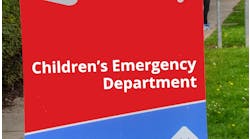The Chartis Group’s Cervenak: We’re Still Early on the Analytics Journey of 1,000 Miles
Even as the leveraging of data analytics becomes ever more essential to success with population health management, care management, clinical transformation, operational transformation, success in all types of value-based and risk-based contracts, and just about everything else, as an industry, we’re still early in our mastery of analytics. That point was brought home recently when Healthcare Innovation Editor-in-Chief Mark Hagland spoke with Jody Cervenak, a director at The Chartis Group (Chicago). The Pittsburgh-based Cervenak has many years of experience in managing data, including during a 19-year tenure at the UPMC health system in Pittsburgh and now for 10 years with The Chartis Group. Below are excerpts from their interview.
Looking at that proverbial journey of 1,000 miles, when it comes to successfully leveraging data analytics, where are we as an industry right now?
Obviously, we’ve been dealing with big data in healthcare, for decades. And the idea is that we should be as progressive as other industries in being able to leverage information. We’re drowning in data, and thirsty and hungry for information and insights. I wish I could say that the industry was moving as fast as other industries are; but unfortunately, we’re still predominantly in a descriptive analytics state of maturity. The most progressive organizations are moving towards predictive analytics; they have data scientists, and their executive teams are highly mature, data-driven leadership, that are really using analytics to understand what’s happening in the organization, and are able to understand today’s trends, and to predict what will happen in the future, around analytics.
From what you can tell, about what percentage of hospitals and health systems are really working with predictive analytics at this point?
I think that about 25 percent are truly using predictive analytics; another 25 percent are in the diagnostic stage where they’ve got pockets of predictive analytics; but at least 30 to 40 percent are still in descriptive analytics. It reminds me of the HIMSS Analytics EHR Adoption Model, EMRAM; we could watch organizations move through that maturity model, towards Stage 7, and we were giving awards. And analytics is one of those areas where we’ve begun to measure advancement. And the other opportunity will be in, how do we determine what investments need to be made in analytics? Because we have a ton of information about what organizations spend on their ERP [enterprise resource planning] systems, and EHR [electronic health record] systems; in terms of analytics compared to investment, that would give us some indications—one is investment; the other is simply foundational—do they have good governance around analytics? A lot of our clients, we’re helping them mature and establish their analytics governance model, determine where to invest, whom to hire.
Where are patient care organizations stumbling right now?
Governance is one of the areas in which they’re stumbling, because analytics is a highly decentralized function. So one is how an organizational leaders organize their tools and resources, to make sure they’re delivering analytics to the organization with the most efficient approach. They need a coordinated, prioritized, kind of centralized model. And it’s tricky, because you can’t put all the tools into a single place. You need to deliver high-touch services, yet have a coordinated and centralized management set. The other area where they’re struggling is that there isn’t a centralized leadership. So more and more clients are evolving forward a role of chief analytics officer—someone sitting in the c-suite who can really be the trusted partner, to collaborate with the chief executives.
Many patient care organizations are hiring individuals or promoting them to the titles of chief analytics or chief data officer; how does that role mesh with the existing CIO and CMIO roles?
Sometimes, the demand for executive roles is challenging. Sometimes, you can have a chief data officer, and that typically is a technology executive; they have accountability and stewardship over the quality of the data. The analytics officer tends to have less of a technology background and more of a business or clinical background. And that translation is so important for the chief analytics officer. To be able to translate how you ask questions and then develop data models and the analytics to support that. And the technology/data people can’t always understand what the business needs are.
How should the chief analytics officer mesh with the CIO and CMIO?
It depends. Some CIO roles are very operationally oriented, and some are very strategic. In some cases, we recommend that the chief analytics officer report directly to the CEO or the c-suite, because that role of setting strategic priorities for analytics, there are opportunities to lean in, and sometimes, that has to be a separate reporting relationship. But sometimes, we recommend that the chief analytics officer report to the CIO. Also, the chief analytics officer,
And with the CMIO?
It absolutely a partnership, that the CMIO can work with the chief analytics officer, to make sure that key questions are resolved, and analytics is helping to support the clinical environment. How do you embed analytics into clinical workflows? The CMIO is the key role in that regard. So we’re seeing workflow, analytics, and technology, tightly coupled, with analytics.
We’re early on in terms of using artificial intelligence (AI)—what are you seeing so far?
I think that AI has been very successful in some of the back-office areas of healthcare, where you’re looking to automate functions—such as in supply chain, revenue cycle management, and coding; we’ve seen AI play a role in some of the security and access pieces in an organization, including temperature control systems and medication management. Where it’s not been as broadly used is in that direct patient care arena. That will provide a key opportunity.
When you think about the digital transformation that’s happening in HC, and you’re looking at programs like hospital at home, eICU, or telehealth, the opportunities are unlimited in terms of where AI could play a role to support clinicians and patients, when they’re not physically together. And precision medicine is another important area: how we can customize care for a patient based on their environment, genomics, and lifestyle. It will be really exciting when we’re trying to do drug therapy, to develop their own individual profile; that could be profound, when we think about all the trial and error in terms of administering medications.
Embedding AI tools into clinical decision support at the point of clinical decision-making and ordering—that seems to be a next step for many patient care organizations.
I think some of that is teetering towards AI; a lot of CDS is really about leveraging expert systems, and crunching the right information to get the right answer. Where AI will come in is where the computer system can start developing pattern recognition; I don’t know if we’re there yet. But already can anticipate sepsis incidents, for example. And that involves advanced computer applications. So we’re at a point where analytics is really driving the diagnostics, and that’s exciting. I don’t know if that’s AI, though.
Some people are a bit fuzzy on the distinction, in their minds.
Oh, it’s the whole industry that’s fuzzy! And I was in a recent conversation with a computer expert who insisted on the difference.
But advanced analytics is helping with CDS at the point of care?
Yes, I think it is. One thing that’s been demonstrated is the power of analytics. Everyone recognized during COVID the power of analytics to screen, to know what’s going on. People are still using analytics to anticipate capacity shifts. The same thing is true about telehealth and digital; we’ve finally gotten over this fear in HC where people weren’t sure whether they could trust the analytics in patient care. There was a lot of trepidation, and with COVID, we were forced to break some of those perceptions from the past, and people realized they could realize on analytics and digital, to help us transform care delivery.
What will the next two or three years look like in this key area of analytics?
I think there will be continued growth in analytics. We’re going to see more and more organizations getting to predictive analytics; we’re going to see more and more organizations leveraging analytics for everyday decision-making. A lot of c-suites will get smarter about using the power of analytics. I think the tech industry will expand, and there will be more capabilities and tools for visualization and for data mining; and there will be more opportunities for data professionals.
What would your advice be for CIOs and CMIOs right now?
To make sure analytics is a prioritized line item in the capital budget, in the operating budget; that they identify resources; that they develop strong governance around data and analytics, as they’ve been doing with EHR and ERP governance for years. What does analytics look like in your organization, where are the resources? Is there duplication of data and tools? Conversations about opportunities to more efficiently manage and deliver data and analytics tools.
Is there anything you’d like to add?
With regard to the chief analytics officer—there maybe is a combined role called the CDAO, who will oversee both data and analytics, and work with the CIO and CMIO. I don’t know if it needs to be a distinct role in the future. But it’s someone who’s an executive who can oversee both data management and analytics and the transition.
Some of what we’re asking the CDO to do was done by the CTO in the past, correct?
It was a combined role, where the CTO handled the storage and flow of data, but the chief applications officer handled data in its sources—how does the data live inside the EHR, etc.? And sometimes, there was a warehouse director; but it was a shared role under the CIO. And that is a great topic to discuss.


